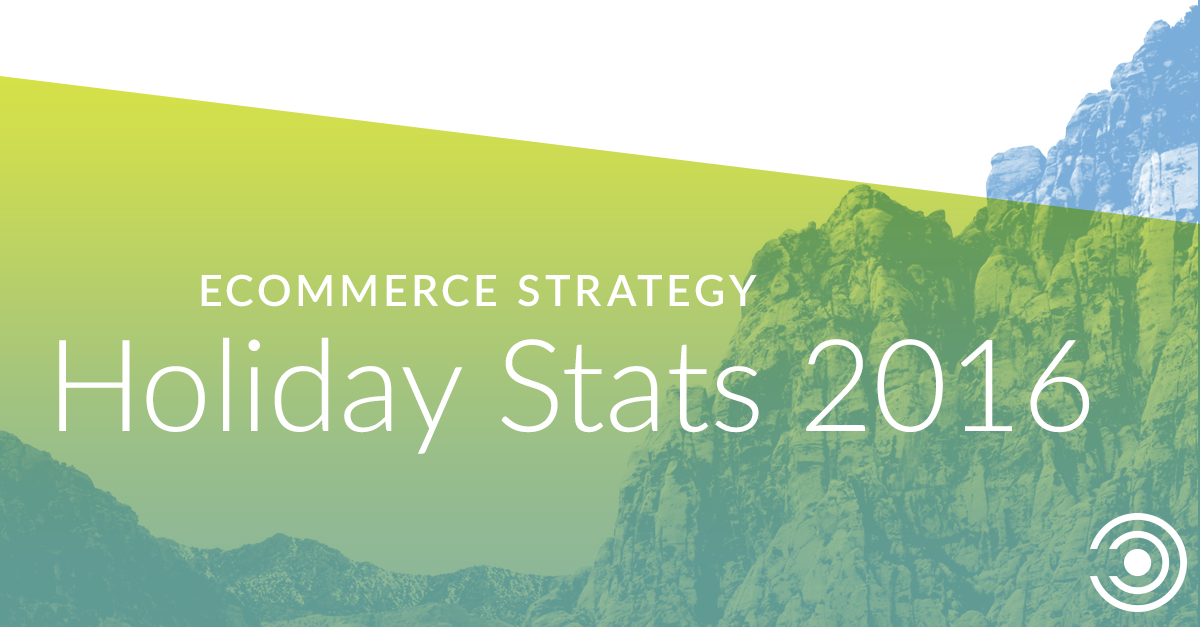eComm, Email, & Holiday: How to Get More Out of Your List this Holiday Season

Holiday email is about much more than sending a few promotions and offers for Black Friday and Cyber Monday. Here’s how to get the most out of your list this holiday shopping season.
The average eCommerce company will acquire 23.8% of its new customers during the holiday season.
That alone is an impressive (and daunting) thought, but the real question eComm marketers should be asking before, during, and after holiday is this: how can I get more value out of new and existing customers?
The answer to that question is email.
Email marketing accounts for over 7% of all eCommerce transactions, making it the second most effective eCommerce marketing channel behind search (15.8%), according to Custora. During holiday especially, this is a critical channel to get right.
With that in mind, here’s what it takes to get even more out of your email lists this holiday season.
Start with an Informed, Measurable Email Strategy
The first step to drive maximum profitability from your holiday email campaigns is to create a well-informed, measurable strategy.
A well-informed strategy is driven by KPIs and marketing data. It’s not just about the number of emails you need to send, or the types of emails you need to send, but exactly what you need from email to achieve your total holiday revenue goals.
Your strategy should answer the following questions:
- What are your total revenue goals this holiday?
- How will email contribute to these goals?
- How many emails will you need to send to reach those goals?
- How much revenue will each email need to drive to reach those goals?
- How does this compare to last year’s holiday numbers and this year’s YTD trends?
By letting KPI’s and data drive the strategy, you build in a framework to measure the effectiveness of your email campaigns. I’ve got more on that farther down in this post.
Outside of revenue goals, you should also be thinking about growing your email lists. How will you grow your subscribers during holiday? Are there clear, persistent, and compelling opportunities on your site and across your social channels for people to opt-in? Can you offer some type of incentive to encourage opt-ins?
The earlier you tackle your strategy work, the easier it will be to align teams, activities, and assets to accomplish your goals.
Build a Framework based on Calendar Promotions, Triggered Content, & Segmentation
With the overarching email strategy in place, you can start to build out the emails that you’ll need to drive your holiday goals. I suggest breaking out your efforts into three buckets: calendar promotions, triggered content, and segmented campaigns.
Calendar Promotions
Calendar promotions stem from your marketing calendar and are the incentives and offers you’ll run throughout the holiday. For example, what offers will you be running on Black Friday and Cyber Monday? What emails will you need to send leading up to those big ticket days to inform and prepare your customers?
These type of emails can form the basic foundation of your holiday email strategy. But they should not be the only card in your email deck.
Triggered Content
Triggered emails are based on customers’ transaction history, and are critical revenue drivers for ecomm marketers.
“Over 75% of email revenue is generated by triggered campaigns, rather than one-size fits all campaigns. – DMA”
Line out the triggered emails that make sense for your brand and revenue goals. We most frequently recommend intelligent Order Confirmation emails, Post-Purchase emails, Bounce Back emails, Recommended Products emails and Re-Activiation Series as the bare minimum to support ecomm email revenue goals.
Welcome Series emails are also a big opportunity within the triggered branch. Update your welcome series with holiday creative to position your brand favorably in front of new subscribers. Outline the advantages to gift shopping with you (great gifts and products, easy ordering, free shipping, no-hassle returns), share the brand story, and invite subscribers into the brand lifestyle (social media, brand message, etc.).
Segmented Campaigns
With the above in place, it’s time to think segmentation. Segmentation is about creating mini-lists to deliver highly personalized and relevant content to your customers and potential customers.
Personalization is not simply adding the first name of your recipient to the subject line and body copy of the emails. Consumers expect to have content surfaced to them that’s tailored to their interests and buying habits. Technology today provides more powerful options to personalize the content that you send your list—if you segment correctly.
Consider segmenting your list by:
- Site Visitors (non-buyers)
- Product Type Interest
- Purchase History
- Recent Customers
- First-Time Customers
- Returning Customers
- High Value Customers
- Dormant/Inactive Customers
Once you’ve segmented your list out accordingly, brainstorm the content and incentives that will be enticing to each segment. For some ideas, check out our free white paper How To Make Email A Top Ecommerce Revenue Driver This Holiday Season.
Monitor, Test, Evolve, and Repeat
We all know there’s more to an email strategy than just creating and sending an email. The best eCommerce marketers are data-driven. Analyze the performance of every email you send (from the standpoint of opens, click throughs, conversion rates and revenue) and apply insights to future emails.
Monitor email performance, A/B test frequently, and evolve your strategy to drive maximum results. Test key components within your emails, including:
- Send times (day of week, time of send)
- Subject lines (offer-driven, $ driven, question/declaration)
- Offers (%off vs $off)
- Cutoff dates (order by 12/1)
- Urgency (“Limited Time” vs “Buy Today”)
- Call to Action copy (“Buy Now” vs “Shop Today”)
- Images (products vs products + people)
Get the Most out of Your List this Holiday
Holiday email is about much more than sending a few promotions and offers. If you’re only sending blanket promotional emails at key holiday times, you’re leaving money on the table—and chances are, lots of it.
Setting attainable goals, applying best practices, taking advantage of segmentation and testing, and evolving your content will be the key to maximizing the success of your holiday email marketing.

